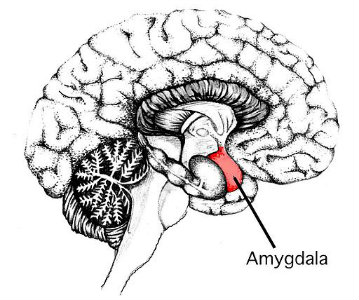
I dropped my kids at their half-hour music lesson and said I’d join them inside in about ten minutes — I was going to meditate in my car.
“What do you do when you meditate?” asked my eight-year-old son. “Is it like this?” He put his thumb on top of his middle finger, palms up, and started chanting, “Ommmmmm, ommmm,” and then collapsed into giggles.
Meditation, for those who’ve never tried it, is difficult to grasp. You just…sit there and do nothing? Try not to think? The passivity of the exercise runs so counter to our culture, which is about doing and achieving, the concept does seem laughable.
The evidence regarding the benefits of learning to meditate is mostly anecdotal, although Harvard neuroscientist Sara Lazar conducted a study that revealed long-term meditators have an increased amount of gray matter in the auditory and sensory cortex, meaning their senses are enhanced, as well as an enlarged frontal cortex, which handles working memory and executive decision making. That’s great, but probably not motivation enough for most people to take time out of their busy days to do something that feels a whole lot like nothing.
Lazar conducted another study that showed meditation has an impact on the brain after only eight weeks, most notably shrinking the amygdala, the part of the brain responsible for anxiety, fear, and stress. This is where the effects of meditation start to get interesting, especially given the recent news about the disastrous effects of restrictive diets on our health and weight.
What Learning to Meditate Has to Do With Weight Loss
 In her new book, Why Diets Make Us Fat, neuroscientist Sandra Aamodt is attempting to change our approach from dieting to mindful eating. Evidence is mounting that diets don’t work, and that the majority of people who diet end up worse off than when they started. Aamodt has an interesting perspective on one of the main reasons tradition diets fail.
In her new book, Why Diets Make Us Fat, neuroscientist Sandra Aamodt is attempting to change our approach from dieting to mindful eating. Evidence is mounting that diets don’t work, and that the majority of people who diet end up worse off than when they started. Aamodt has an interesting perspective on one of the main reasons tradition diets fail.
She says diets lead to weight gain because they are stressful.
As she explains, stress hormones act on fat cells to increase abdominal fat. On top of that, weight anxiety and dieting predict later binge eating and weight gain. Aamodt advocates what she calls “mindful eating,” which boils down to eating when you’re hungry and stopping when you’re full. This requires sitting down for actual meals without distractions, and being attuned to your body’s signals.
How do you do that? One way is regular meditation.

It can feel like meditation isn’t accomplishing anything, but what you’re doing in those moments of stillness is learning how to tune in to your body. Paying attention to your breathing. Noticing the feel of the rug under your bare feet. Feeling the light pressure of your hands as they rest on your knees. These are all things we don’t normally notice, just like many of us don’t notice our body’s signals of hunger and satiety.
If you practice push-ups every day in the gym, then your arms and core will get stronger, and if you practice paying attention to your body’s physical sensations, you will become better at mindfulness.
3 Ways You Can Make Learning to Meditate Easier
Jumping into meditation can be intimidating. What exactly are you supposed to do while you sit there? Are you supposed to think or not think? Should you count your breaths? How long should you meditate? Here are three tips that will make learning to meditate easier.
1. Choose a Meditation App
Guided meditation is the best way for a beginner to start meditating. In guided meditation, you’re typically given instructions and a focus for the session. There is quiet time for you to practice meditating, but the guide periodically checks in and then wraps up the session.

The best meditation app on the market is Headspace, which costs $7.99 per month, billed as one yearly payment. There are other payment levels, which are explained on their website, and you can also use the content on your computer. The creator and voice of Headspace is Andy Puddicombe, a meditation and mindfulness expert. He has a lovely, soothing voice and a gift for explaining the goals for each meditation session. The app tracks your progress, starting with ten sessions of ten minutes each. From there, you can increase your meditation time and/or pick a different area of focus, from improving sleep to reducing anxiety.
Of the free meditation apps, Calm is a standout. The app evolved from Calm.com, where you could set a timer and listen to soothing scenery and sounds. The app has kept the scenery and nature sounds, but it also offers guided meditation. It’s not as specific and instructive as the guidance on the Headspace app, so it might be a bit frustrating for someone new to meditating, but the app does keep track of your progress and offers a different focus for each session.
2. Schedule Your Meditation
This is the part I struggle with the most. A natural time for meditating is first thing in the morning. It sets a wonderful tone for the day. You are less likely to put off meditating if you make a habit of doing it in the morning. But morning meditation doesn’t work for me because everyone in my family is up early, and I don’t have a special mediation space in the house where nobody will bother me. During the school year, I have the house to myself from 8:00am to 2:30pm, so that’s when I try to fit in meditation. When that’s impossible, I sometimes meditate after the kids go to bed. In that case, the meditation is more of a winding-down exercise, rather than a gearing-up.
It’s easy for your meditation practice to fall to the bottom of the list, because it seems so unproductive. However, most of us — myself included—easily waste at least ten minutes on social media every day. During this contentious election season, social media can be a significant source of stress. Rather than falling down a rabbit hole of politics, make a decision to step away and focus on the present moment.

3. Set Your Intention
The benefits of meditation can often be hard to quantify or even describe. If you lift weights, you can see your muscles grow, but there’s no way for us to see our enlarged sensory cortex. The effect of increased mindfulness on your weight is not going to be rapid or dramatic, so this approach requires patience and an ability to take the long view. For that reason, you might find yourself getting frustrated if you start meditating in order to lose weight.
Instead of having a goal for meditation, come up with an intention. Intentions are more about the present moment, not about some future success or failure. One might be, “connect with loved ones,” or “stay calm,” or “find peace.” You will likely find other benefits of meditation, but try to stay focused on the daily practice, not the end result.
Learn to Listen to Yourself
Meditation is not a magic weight-loss solution. You must have good nutrition habits, incorporate movement in your life, and get adequate sleep. However, learning to meditate can help you learn how to pay attention to your body’s signals of hunger and satiety, which will regulate your eating and help you enjoy the food you consume.



































